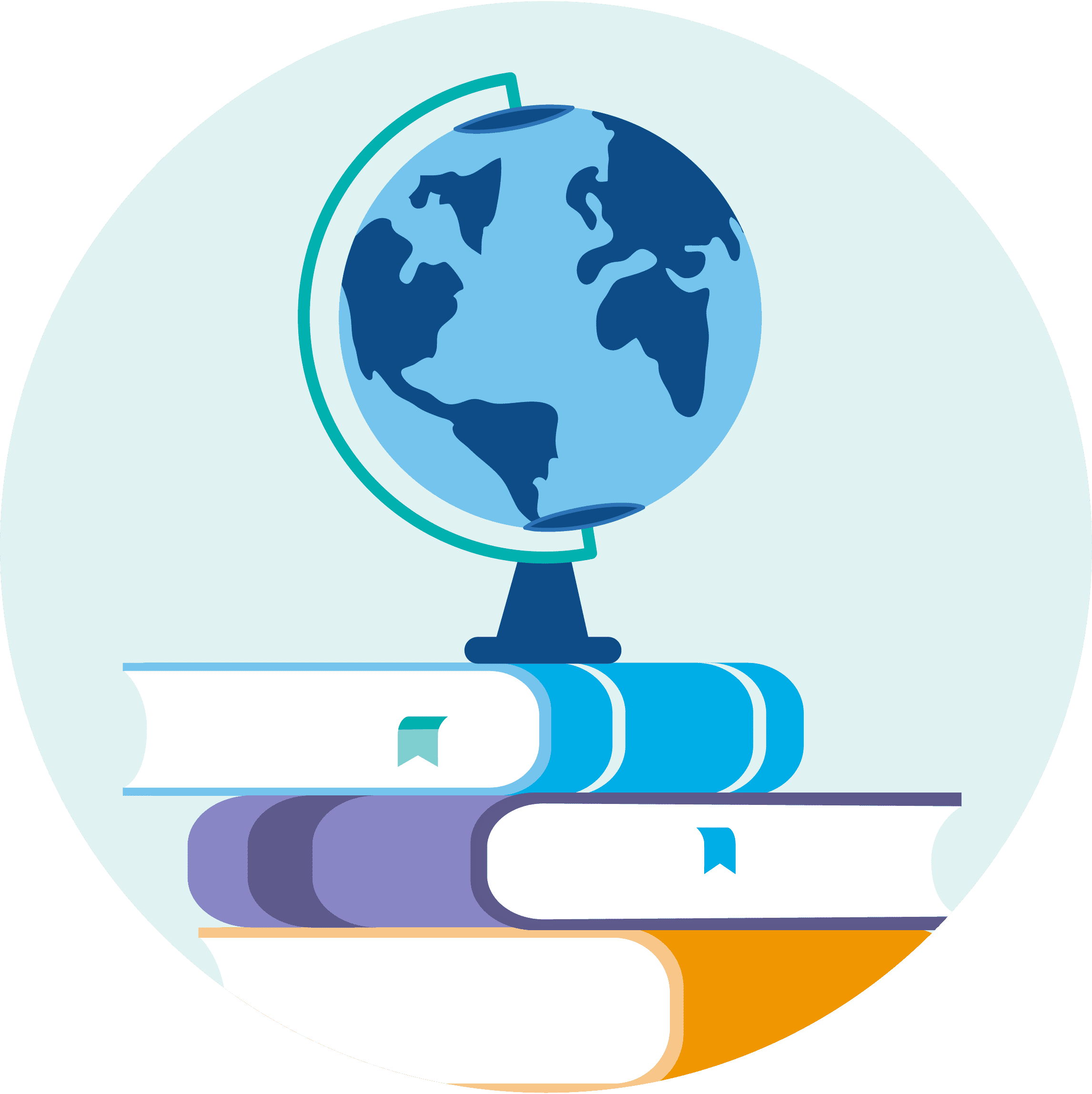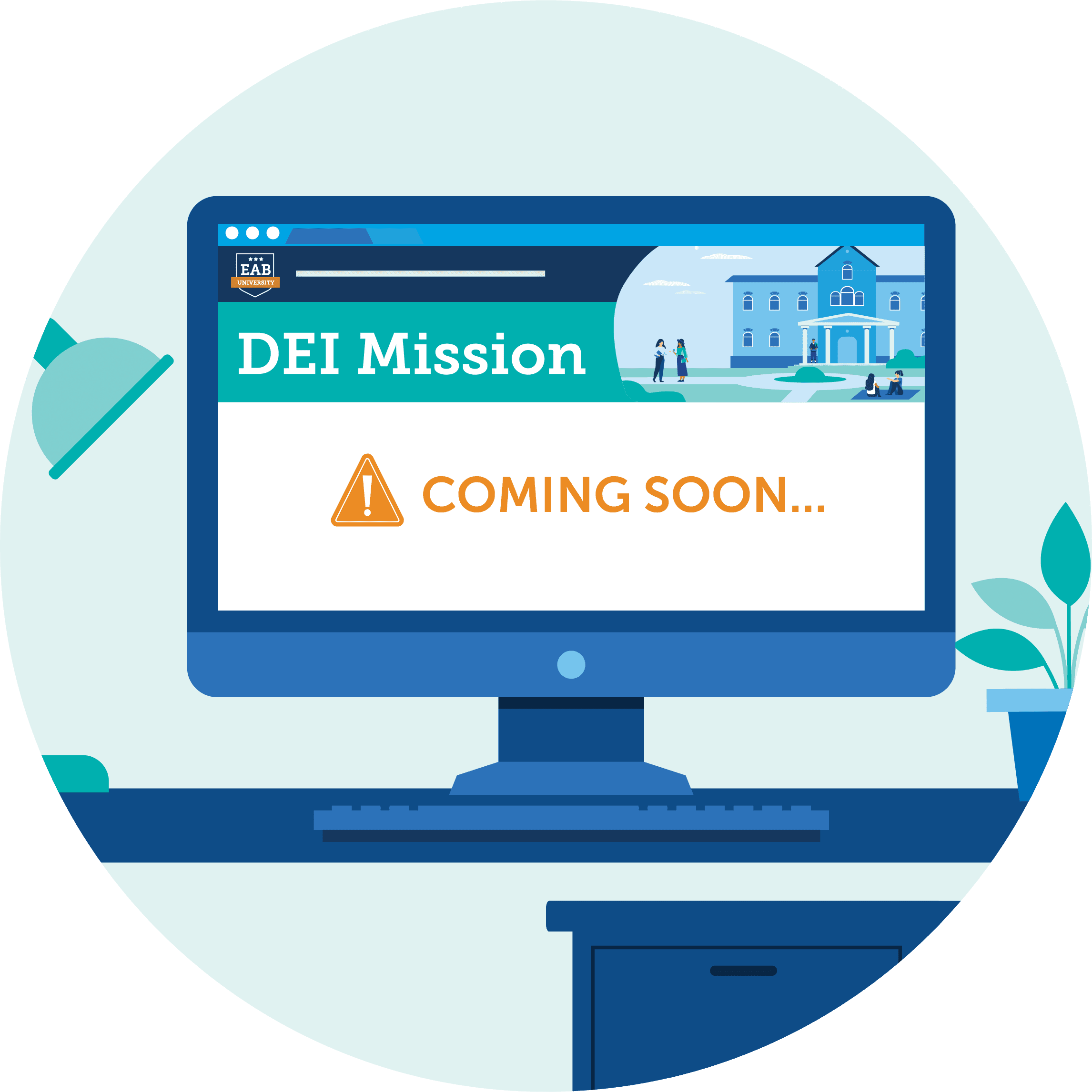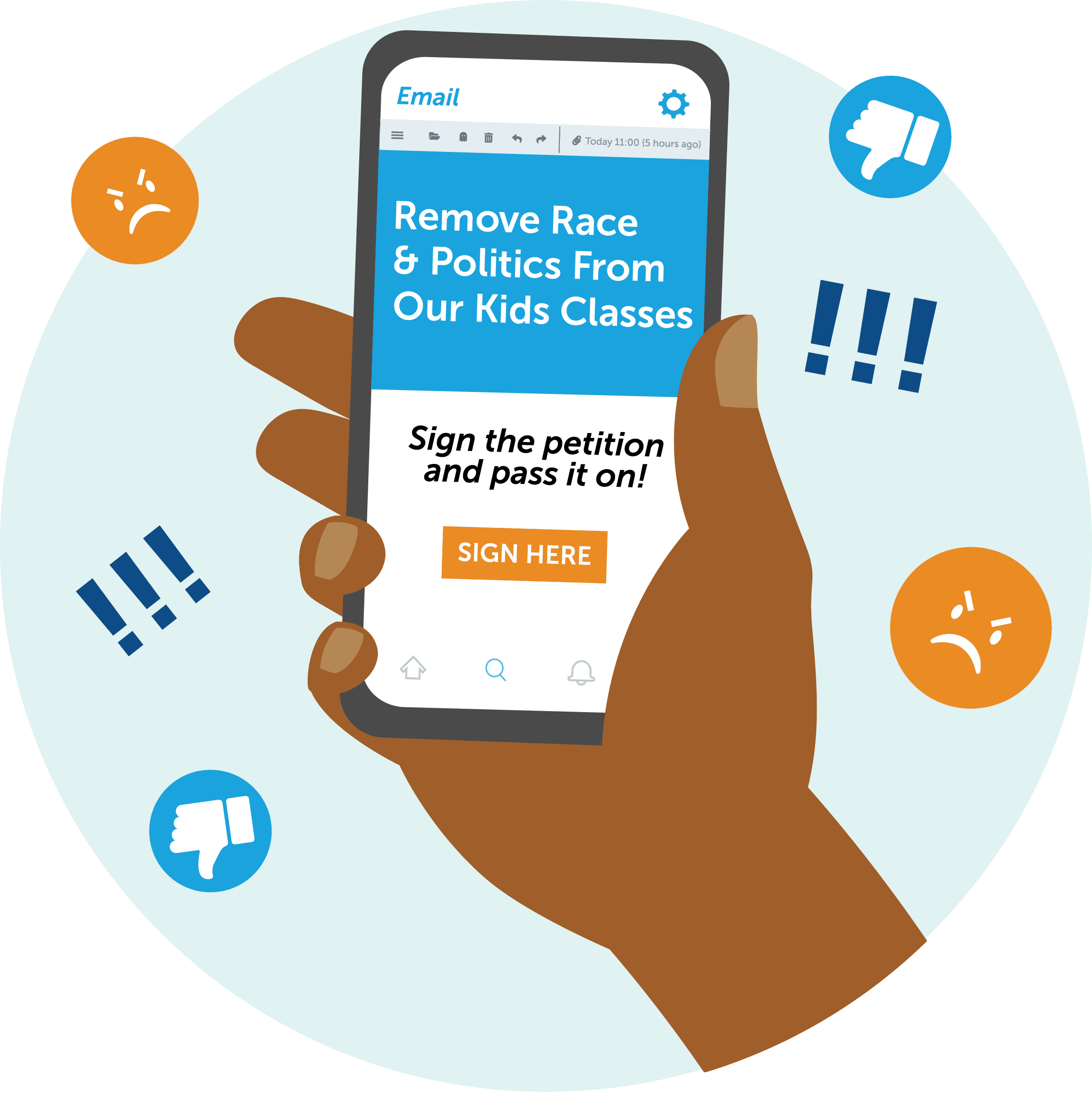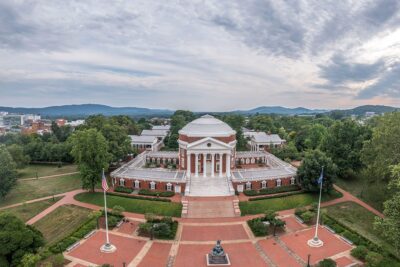Exploring the behaviors and actions that promote racial justice in K-12
The hallmarks of an anti-racist K-12 institution
May 12, 2021
Making progress on racial justice issues is an ongoing priority in the education system. In doing so, institutional leaders must include a balance of both immediate, short-term actions with longer-term strategies. From policies and curricula to institutional history and community relations, leaders must navigate the complex systems of K-12 education to uproot structural racism. But where to start?
Becoming an anti-racist institution involves a conscious, active, and ongoing effort to address the multi-dimensional aspects of racism in our communities and society. EAB has defined the following hallmarks to guide institutional leaders as they develop their journey towards racial justice. The holistic framework illustrates areas that span across units and function to transform the experiences of Black, Indigenous, and People of Color (BIPOC) community members.
This infographic offers an interactive experience to learn about each of the hallmarks through the lives of four BIPOC community members. Click through to meet each person and read about how institutional structures and behaviors have impacted their experience. Then dive into each hallmark to learn about its key attributes and discover examples of what the hallmark looks like in practice.
Hallmarks of Anti-Racism Framework for Public Schools
Strategy and Operations
Consistently Assess District Strategy, Policies, and Operations Through a Racial Justice Lens
Avoid being “colorblind” in strategic visioning, planning, budgeting, and resource allocation, and intentionally consider the impact of all decisions on Black, Indigenous, and People of Color (BIPOC). Create structures that support coordinated and sustained implementation of racial diversity, equity, and inclusion (DEI) efforts district wide. Build shared buy-in, ownership, and accountability for progress toward racial justice and do not disproportionately burden BIPOC in critical anti-racism work.
Key attributes include:
Ownership and accountability
- Creating cabinet-level leadership over DEI and anti-racism efforts with appropriate funding and scope of role
- Incentivizing an ongoing commitment to anti-racism among all district leaders and individual schools and actors
Data-driven strategy
- Recognizing and interrogating data biases; using data to set clear, long-term strategic goals for racial justice work
- Assessing, tracking, and publicly reporting on progress and key performance indicators by intersectional demographic characteristics
Finance and budgeting
- Considering the impact of budget models, budgeting decisions, and funding allocation on racial justice
- Updating procurement practices and dedicating work contracts to BIPOC-owned businesses
Board engagement
- Engaging in work to increase diversity of board membership
- Helping the board understand the impact of structural racism on K-12 education and their role in advancing racial justice

Estefania Rivera, Parent: (translated from Spanish) “We just got a new superintendent for my district who, once again, declared closing achievement gaps between students of color and White kids is a priority. How much of this is lip service? Every few years we get a new program of some sort, but I never know what’s supposed to change for my boys and I don’t see any real progress.”
Curricular & Co-Curricular Experiences
Create and Scale Curricular & Co-Curricular Experiences That Are Reflective and Inclusive of BIPOC
Recognize how curricular design and instructional practices commonly whitewash disciplines, reinforce racist ideals, and impede the learning and engagement of BIPOC. Interrogate the consequences of legacy practices related to student academic placement and progress and ensure that BIPOC students have equitable access to education- and career-enhancing services and supports.
Key attributes include:
Early childhood education
- Investing in the expansion of high-quality, universal early childhood education for BIPOC youth
Curriculum and pedagogy
- Redesigning curricula across disciplines to include BIPOC scholars, history, and academic contributions
- Providing ongoing training and incentivizing teachers to implement inclusive pedagogy and assessments
Academic and college advising
- Ensuring BIPOC students have equitable access to culturally responsive academic advising and placement practices, college counseling advice, and college application support
Career development support
- Ensuring BIPOC students have equitable access to diverse and inclusive career exploration, mentorships, professional skill development, and experiential learning opportunities

Aaliyah Jackson, Student :“I heard that in AP Government and Politics, students get to work on a cool project where they research the history of housing inequity in our neighborhood and interview community nonprofits who are working to solve the problem. It sounds amazing! But I need to have a 3.2 GPA to get into the class and I’m at a 2.9, so my counselor advised me not to try for AP and ‘stick with what will set me up for success.’”

Michael Gray, Teacher: “I’m the only teacher who uses non-Eurocentric lessons with my students. I still teach about the Middle Ages and the bubonic plague, but instead of just focusing on what was going on in Europe, my class also talks about the plague’s effect in Cairo and on the Islamic world. I see my peers only doing what’s comfortable for them, not what would broaden our students’ perspectives.”
School Climate
Build an Inclusive Climate that Promotes Learning and Safety for All Community Members
Engage in productive, open, and ongoing dialogues about enduring racism across the district. Foster communal learning and growth and provide regular opportunities for community members to recognize and disrupt their own biases. Create a safe and open environment for BIPOC to share experiences of bias or harassment and ensure that such incidents are taken seriously and appropriately addressed.
Key attributes include:
Training and awareness
- Implementing mandatory and ongoing cultural competency, implicit bias, and anti-racism trainings and awareness campaigns
- Providing ongoing training, support for all teachers and staff to implement trauma-informed and restorative justice practices
Climate assessment
- Conducting school climate studies to measure how the district supports racial DEI and capture experiences with discrimination and harassment
- Using climate data to redress harmful policies and practices
Incident reporting and response
- Confronting racist acts (e.g., hate crimes, bias incidents), including a transparent reporting system and response team with strong institutional norms of investigating, and appropriately sanctioning incidents
School safety
- Reimagining security and school resource officer programs to balance student well-being with safety considerations

Aaliyah Jackson, Student: “I told my homeroom teacher that I want to be a teacher, too. She told me that I’d never make it because I’m too loud and I’d need to straighten my hair to look professional. I know her response was wrong, but who do I even tell? I’ll just keep it to myself.”

Nik Bluestone, Alum: “I can’t recall any major fights ever breaking out in my school and our neighborhood wasn’t dangerous at all. But one day I brought in my grandfather’s bow to school for a project and I almost got suspended by security. One even muttered that kids ‘like me’ are the problem and I should go back to the reservation.”
Profiled Example: A Systemic Approach to Managing Behavioral Disruptions in Early Grades
EAB’s research on how educators can effectively prevent or manage student misbehavior instead of traditional discipline methods highlights four high-impact, systemic practices to set the foundation for a districtwide response to behavioral disruptions. Districts can also reimagine discipline and school safety through Student Safety Coaches, an alternative to School Resource Officers.
Teachers and Staff
Sustain Investment in Recruiting, Developing, and Advancing the Careers of BIPOC Teachers and Staff
Actively monitor trends and disparities in employee racial diversity across all phases of teacher and staff hiring, retention, and promotion. Ensure that racial representation is reflected across functional areas of the district and that BIPOC are not primarily relegated to financially vulnerable positions. Invest in the ongoing professional development of staff and create viable pathways for BIPOC to advance into leadership roles.
Key attributes include:
Teacher pipeline
- Building equitable, inclusive, and supportive pathways into teaching for BIPOC (e.g., grow your own programs, teacher residencies)
Hiring practices
- Implementing equitable and inclusive hiring practices for all teacher and staff roles (e.g., recruitment networks, job ad composition, hiring timelines, interview and evaluation criteria)
Induction and support
- Considering the explicit impact of school and course placement practices on racial justice goals; creating robust, inclusive teacher induction programs and practices
- Providing equitable access to ongoing, high-quality, and inclusive mentorship and professional learning opportunities
Career advancement
- Providing equitable and inclusive networking and leadership development opportunities
- Ensuring equitable evaluation criteria and structures lead to recognition, advancement, and leadership roles

Michael Gray, Teacher: “A student was shot and killed in a nearby neighborhood. Since I’m one of two teachers of color at this school, I have a flood of emails from my Black and Brown kids wanting to talk. It’s going to push back my lesson planning and grading for the day, but it’s important that I make the space to talk to my students, even if my principal won’t be happy.”
Institutional Culture
Center and Celebrate the Lived Experiences of BIPOC within Institutional Culture
Acknowledge and address their historical complicity in racial segregation, oppression, and slavery. Ensure that district traditions and symbols are reflective of the diversity of the broader community and elevate the cultural assets of BIPOC across all dimensions of the student, staff, and alumni experiences.
Key attributes include:
Traditions and celebrations
- Contextualizing and expanding historical figures, alumni, traditions, and holidays celebrated by the district
- Increasing representation of BIPOC in internal and external communications (e.g., branding, newsletters)
Historical legacy
- Acknowledging original inhabitants of the land occupied by the district and the role of K-12 education institutions in perpetuating racial oppression
- Developing guidelines to engage in truth, reconciliation, reparations conversations
Institutional symbols
- Acknowledging and addressing racist institutional symbols (e.g., mascots, statues, and buildings)
- Setting protocols for future decisions regarding district facilities and symbols
Alumni engagement
- Engaging BIPOC alumni as lifelong members of the school community (e.g., through events, newsletters, mentorship opportunities) in an ongoing, targeted, and culturally responsive way

Nik Bluestone, Alum: “I only recently realized how problematic it was for our school mascot to be a Native American—actually, a Hopi warrior. I used to laugh it off when friends pointed and said it looked like me. More and more I recall the microaggressions I faced, but my school still won’t take those experiences seriously and address the problem.”

Michael Gray, Teacher: “I tell my students the history behind our school namesake – that he was a community leader who amassed a fortune trading slaves. My students always look at me in shock – and some even look betrayed. My peers aren’t having these conversations. One parent even emailed me to ‘stop telling my daughter we’re racist just because you’re an angry Black man.’”
Community Partnerships
Establish Robust Partnerships to Advocate for Racial Justice in the Local and Extended Community
Seek and center the leadership and lived experiences of BIPOC to understand and heal legacies of racial trauma in the local community, region, and in society writ large. Reevaluate relationships with businesses and organizations that perpetuate cycles of systemic racism and inequity and commit to sustained investment in infrastructure and partnerships that uplift BIPOC communities.
Key attributes include:
Racial justice advocacy
- Advocating for racially equitable policies at the federal, state, and
local levels (e.g., funding, attendance boundaries, teacher certification and evaluation criteria) - Partnering with community-based organizations working to advance racial justice to amplify their work
Outreach and engagement
- Developing equitable and inclusive family outreach programs and engagement strategies
- Leading community dialogue about enduring racism, promoting healing
- Reevaluating formal and informal relationships with local police
Basic needs infrastructure
- Investing in affordable housing, food system, health and mental health care, and technology infrastructures in coordination with businesses and community-based organizations to ensure basic needs of BIPOC students and families are supported
P-20 partnerships
- Building accessible pathways into higher education through ongoing, and well-funded partnerships (including HBCUs, HSIs, and MSIs)
- Creating equitable and inclusive teacher, staff, and school/district leadership pipelines and development programs for BIPOC

Estefania Rivera, Parent: (translated from Spanish) “I work two jobs to support my boys, so I can’t always make it to ‘Back to School’ nights, and we don’t have a working computer in our home. My sons’ teachers are always sending emails asking to talk to me about their grades, but I only get them once a week if I go to the library. I’ll just keep relying on my boys to keep me updated on any major news.”
Hallmarks of Anti-Racism Framework for Independent Schools
Strategy and Operations
Consistently Assess Institutional Strategy, Policies, and Operations Through a Racial Justice Lens
Avoid being “colorblind” in strategic visioning, planning, budgeting, and resource allocation, and intentionally consider the impact of all decisions on Black, Indigenous, and People of Color (BIPOC). Create structures that support coordinated and sustained implementation of racial diversity, equity, and inclusion (DEI) efforts institution wide. Build shared buy-in, ownership, and accountability for progress toward racial justice and do not disproportionately burden BIPOC in critical anti-racism work.
Key attributes include:
Ownership and accountability
- Creating cabinet-level leadership over DEI and anti-racism efforts with appropriate funding and scope of role
- Incentivizing an ongoing commitment to anti-racism among all institutional leaders and individual schools and actors
Data-driven strategy
- Recognizing and interrogating data biases; using data to set clear, long-term strategic goals for racial justice work
- Assessing, tracking, and publicly reporting on progress and key performance indicators by intersectional demographic characteristics
Finance and budgeting
- Considering the impact of budgeting decisions, donor relations, and giving campaigns on racial justice
- Updating procurement practices and dedicating work contracts to BIPOC-owned businesses
Board engagement
- Engaging in work to increase diversity of board membership
- Helping the board understand the impact of structural racism on K-12 education and their role in advancing racial justice

Lisa Gai, Head of DEI, “My number one job is to build trust within the school community in our DEI efforts and build capacity for the work across each school. But my job becomes difficult when parents, alumni, even the Board want immediate, bold action. We can’t get everyone on the same page and undo centuries of systemic racism with a 30-day plan.”

Lloyd Bello, Parent, “The school said that they’re taking racial injustice seriously and they’re reviewing policies and practices by this fall. It’s the start of the second term now, so I went on the website to look for an update, but I couldn’t find one. I guess it was all talk and no action. Me and some other families of color will be writing our own action plan if the school won’t.”
Curricular & Co-Curricular Experiences
Create and Scale Curricular & Co-Curricular Experiences That Are Reflective and Inclusive of BIPOC
Recognize how curricular design and instructional practices commonly whitewash disciplines, reinforce racist ideals, and impede the learning and engagement of BIPOC. Interrogate the consequences of legacy practices related to student academic placement and progress and ensure that BIPOC students have equitable access to education- and career-enhancing services and supports.
Key attributes include:
Early childhood education
- Investing in the expansion of high-quality, universal early childhood education for BIPOC youth
Curriculum and content
- Redesigning curricula across disciplines to include BIPOC scholars, history, and academic contributions
- Amending service-learning programs so they do not re-enact colonialist exchanges with BIPOC communities
Inclusive pedagogy
- Providing ongoing training and incentivizing faculty to implement inclusive pedagogy and assessments
Advising and career development
- Ensuring equitable access to non-biased academic advising and placement practices, college counseling advice, and college application support
- Ensuring equitable access to diverse and inclusive career exploration, mentorships, professional skill development, and experiential learning opportunities

DeAndre Williams, Student, “My friends don’t understand why some high school kids—like the Black public school kids we volunteer with—don’t get tutoring for SATs like they do—as if everyone can afford it. I think my friends would get it if we talked about equity in class, but my teacher never brings it up. There’s a reason why there’s a low-income neighborhood right down the block from us.”
School Climate
Build an Inclusive Climate that Promotes Learning and Safety for All Community Members
Engage in productive, open, and ongoing dialogues about enduring racism across the institution. Foster communal learning and growth and provide regular opportunities for community members to recognize and disrupt their own biases. Create a safe and open environment for BIPOC to share experiences of bias or harassment and ensure that such incidents are taken seriously and appropriately addressed.
Key attributes include:
Training and awareness
- Implementing mandatory and ongoing cultural competency, implicit bias, and anti-racism trainings and awareness campaigns
- Providing ongoing training, support for all teachers and staff to implement trauma-informed and restorative justice practices
Climate assessment
- Conducting school climate studies to measure how the school supports racial DEI and capture experiences with discrimination and harassment
- Using climate data to redress harmful policies and practices
Incident reporting and response
- Confronting racist acts (e.g., hate crimes, bias incidents), including a transparent reporting system and response team with strong institutional norms of investigating, and appropriately sanctioning incidents
School safety
- Reimagining school security programs and protocols to balance student well-being with safety considerations

Lloyd Bello, Parent, “There is a group of parents who are working on a petition to get the school to suspend a faculty member of color who had the courage to talk to the kids about George Floyd. Sure, I know firsthand that the effects of slavery didn’t end with abolition, but how is the school going to work with these parents to build their awareness and understanding?”

DeAndre Williams, Student, “We’re learning about the Civil War in history class and one kid blatantly called me the n-word, in front of the whole class and our teacher. My teacher just called him out and said not to do that, but there wasn’t any other action. She seemed kind of flustered. I talked to him myself and he apologized, but what if this happens again? What else can my teacher do? I don’t think incidents like this are even tracked.”
Faculty and Staff
Sustain Investment in Recruiting, Developing, and Advancing the Careers of BIPOC Faculty and Staff
Actively monitor trends and disparities in employee racial diversity across all phases of faculty and staff hiring, retention, and promotion. Ensure that racial representation is reflected across functional areas of the institution and that BIPOC are not primarily relegated to financially vulnerable positions. Invest in the ongoing professional development of staff and create viable pathways for BIPOC to advance into leadership roles.
Key attributes include:
Faculty pipeline
- Building equitable, inclusive, and supportive pathways into teaching for BIPOC and advocating for alternative pathways to faculty roles (i.e., reimagining the rigid profile of an ideal faculty member)
Hiring practices
- Implementing equitable and inclusive hiring practices for all faculty and staff roles (e.g., recruitment networks, job ad composition, hiring timelines, interview and evaluation criteria)
Induction and support
- Creating robust and inclusive onboarding programs for BIPOC faculty and staff and equitable access to ongoing, high-quality, and inclusive mentorship, peer support networks, and professional learning opportunities
Career advancement
- Providing equitable and inclusive networking and leadership development opportunities
- Ensuring clear and equitable evaluation criteria and structures lead to recognition, advancement, and leadership roles

Lisa Gai, Head of DEI, “I conducted a listening tour when I started at the school and our faculty of color have lost trust in administration. They said before we can hire any more diverse faculty or staff, we need more support systems for BIPOC and fair performance evaluations. They also want me to create professional development programs for their White peers on how to navigate conversations around race and social justice. I know we need a data-driven strategy here, but I don’t have the capacity to conduct an assessment and launch these programs on my own. I need a team.”
Profiled Research: 14 Practices for Hiring Top Talent
Use EAB’s best practice strategies for hiring top talent based on criteria that matters most. Focus on strategies such as centrally collecting hiring data to cultivate data-drive strategy behind recruiting efforts (practice 1), expanding beyond independent school-centric recruiting sources (practices 11 and 14), and developing an evidence-based hiring process (practices 5 to 9).
Institutional Culture
Center and Celebrate the Lived Experiences of BIPOC within Institutional Culture
Acknowledge and address their historical complicity in racial segregation, oppression, and slavery. Ensure that institutional traditions and symbols are reflective of the diversity of the broader community and elevate the cultural assets of BIPOC across all dimensions of the student, staff, and alumni experiences.
Key attributes include:
Traditions and celebrations
- Contextualizing and expanding historical figures, alumni, traditions, and holidays celebrated by the institution
- Increasing representation of BIPOC in internal and external communications (e.g., branding, newsletters)
Historical legacy
- Acknowledging original inhabitants of the land occupied by the institution and the role of founders in perpetuating and benefitting from racial oppression
- Developing guidelines to engage in truth, reconciliation, reparations conversations
Institutional symbols
- Acknowledging and addressing racist institutional symbols (e.g., mascots, statues, and buildings)
- Setting protocols for future decisions regarding district facilities and symbols
Alumni engagement
- Engaging BIPOC alumni as lifelong members of the school community (e.g., through events, newsletters, mentorship opportunities) in an ongoing, targeted, and culturally responsive way

DeAndre Williams, Student, “We’re a school in the northeast and we’re all proud of our founding fathers’ belief in education for all, White or Black, landowner or freed slave. I’m proud of it, too, but I was shut down in class once when I tried bringing up that one of the founders invested money in the school from selling slaves. Our teacher didn’t think it was worth talking about, but shouldn’t we admit that there’s more to our founding than a happy story of education for all?”
Community Partnerships
Establish Robust Partnerships to Advocate for Racial Justice in the Local and Extended Community
Seek and center the leadership and lived experiences of BIPOC to understand and heal legacies of racial trauma in the local community, region, and in society writ large. Reevaluate relationships with businesses and organizations that perpetuate cycles of systemic racism and inequity and commit to sustained investment in infrastructure and partnerships that uplift BIPOC communities.
Key attributes include:
Racial justice advocacy
- Partnering with community-based organizations working to advance racial justice to amplify their work
- Reevaluating formal and informal relationships with local police
Outreach and engagement
- Developing equitable and inclusive family outreach programs and engagement strategies
- Leading community learning and dialogue about enduring racism, promoting transformation and healing
Basic needs infrastructure
- Investing in affordable housing, food system, health and mental health care, and technology infrastructures in coordination with businesses and community-based organizations to ensure basic needs of BIPOC students and families are supported
P-20 partnerships
- Building accessible pathways into higher education through ongoing, and well-funded partnerships (including HBCUs, HSIs, and MSIs)
- Creating equitable and inclusive faculty, staff, and leadership pipelines and development programs for BIPOC

Jessie Montenegro, Alum, “My school takes a family approach to college advising during junior year, but my parents never got much out of it because of the language barrier and their work schedules. All the other kids’ parents had biweekly meetings with a faculty member or a counselor to answer their questions, make sure their kid was on track to building a well-rounded application, and even get a head start on financial planning. I wish the school would put more effort in with families like mine. My parents are now completely out of touch with my college life, and they don’t understand how I can make a career out of working in social justice.”
Student Enrollment
Expand Enrollment Strategy to Promote Access for BIPOC Students
Elevate a racially diverse student body as a fundamental asset to building a school community and a central component of overall vision and strategy. Confront the exclusionary impact of historical admissions practices on the BIPOC community and intentionally prioritize efforts to build accessible and affordable pathways into independent schools for BIPOC students.
Key attributes include:
Student recruitment
- Using equitable and inclusive marketing and recruitment practices
- Expanding typical recruitment networks and intentionally increasing outreach to BIPOC students and families
Application process
- Considering the ways in which application questions, timing, length, fees, format, and processes (e.g., required tours, interviews) may limit access for BIPOC families
Admissions and enrollment
- Updating policies (e.g., role of legacy and sibling considerations, standardized test scores) and practices to reduce bias and support racial equity in admissions
- Evaluating and reducing barriers to enrollment and attendance (e.g., transportation, school uniforms)
Affordability
- Invest ongoing resources to promote affordability for historically underserved BIPOC communities through pricing and financial aid distribution policies

Jessie Montenegro, Alum, “My family is Peruvian. My parents don’t speak English, but we get by. I was on my own to figure out that I could get a scholarship to an independent school instead of going to the public school in our neighborhood. I translated all the documents they had to sign and acted as a translator during our family interview. I thought that a school like mine would have resources for my parents, but they didn’t—and still don’t.”
Profiled Example: Implementing Indexed Tuition at Your School
Reach families who have not traditionally considered independent schools by implementing indexed tuition. As opposed to an offer of “aid,” indexed tuition focuses on the language of affordability with families seeking aid around what they are able to contribute.
More Blogs

How is higher ed approaching DEI initiatives amid policy pressures?

Essential guidance for exploring your institution’s legacies of racism
